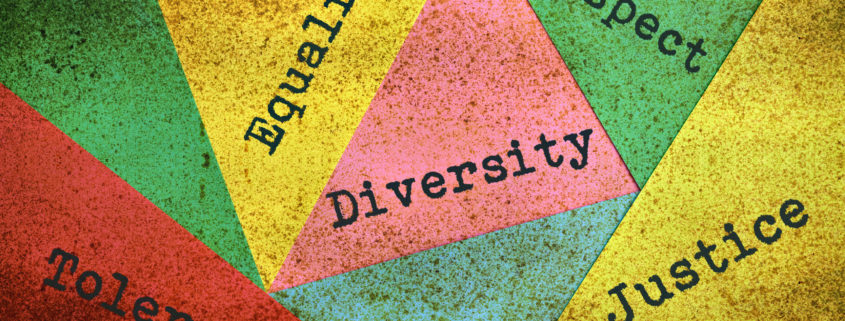Building Equity and Breaking Bias in Storytelling

Want to learn more about building equity and breaking bias in storytelling? Join us for our upcoming 2018 Mission Forward Spring Reception on Wednesday, May 16, at Mission Partners’ Bethesda office. Learn more and register by clicking here.
By Carrie Fox
“When You Know Better, You Do Better.”
Maya Angelou
Tucked inside the March 13 edition of our What We’re Reading newsletter, we shared a story written by Atlantic journalist and science writer Ed Yong, who spent two years trying to fix the gender imbalance in his stories. Inspired by his colleague Adrienne LaFrance, who conducted a similar assessment across all Atlantic journalism, he found that only 24 percent of his last 23 articles quoted sources that were women. And of those stories, 35 percent featured no female voices at all.
“I knew that I care about equality, so I deluded myself into thinking that I wasn’t part of the problem. I assumed that my passive concern would be enough. Passive concern never is.”
Yong’s heartbreakingly honest revelation, and several others like it, spurred my desire to dig in on ways that writers, marketers, and communications directors can build equity and break bias in their storytelling. Major news organizations from NPR to National Geographic have started looking inward to reduce their long-held biases in reporting, but that same fervor to address implicit bias in storytelling simply isn’t showing up from communications directors, marketing directors, and content producers of non-media organizations—even though it should.
What Ed’s story, and others like it, reinforced to me was that as writers, we inherently believe that we’re telling our best stories. If asked, we’ll say we conducted multiple interviews and sought out several sources, but the reality of implicit bias is that we bring it to the table without realizing it is there.
If you were to assess the stories on your own website, in your most recent annual report, or across your most recent marketing campaign, how much bias would you uncover? What if the stories you’ve been telling are actually limiting your ability to communicate with your most important audiences? What if, in elevating your organization’s “best” stories, you are unintentionally leaving out some of the most vital voices from your organization’s narrative?
Biases exist in all of us, simply based on our own lived experiences. But anyone can learn to break biases in storytelling, with the right tools and perspective.
Here are a few tips we’ve started implementing to help our clients write with an equity lens, inspired in part by the findings of Ed Yong and other journalists:
1. When you focus on who your stories are about, and who benefits from them, you’re more likely to be inclusive in your storytelling.
Bias-free language does not discriminate, but instead includes all readers in a fair and friendly manner. Here are a couple quick ways to test if bias is showing up in your writing:
- Review your writing for the appropriate use of pronouns to ensure neutrality when referring to a person’s gender identity. For instance, “each manager must report his numbers at the end of the month” presents a bias, as compared to “each manager must report their numbers at the end of the month.” (For a deeper dive on the use of gender-neutral pronouns including the use of non-binary pronouns, check out this New York Times article by Raillan Brooks.)
- Replace gender-biased terms such as salesman or chairman with bias-free terms, such as salesperson or chairperson.
- Focus on people, not their conditions or current state, i.e. person-first language. We all experience different moments in our lives, but one need not be defined by those moments. There’s an important difference between describing a homeless person and a person experiencing homelessness, or a foster youth vs. a young person living in foster care.
2. The most important and influential voices in your organization are not always the most expected.
For years, organizations have been pressed to present their impact via stories, often elevating one or two of the best examples of impact. This small set of success stories is rarely representative of the whole, and may be reinforcing your organization’s own biases by portraying what your organization believes is a picture of success vs. what your community might believe to be success.
- Assess your own unconscious attitudes and associations to better inform your storytelling. One of the most effective (and free) tools for testing your own unconscious bias is the Implicit Association Test (IAT), created and maintained by Project Implicit, a consortium made up of researchers from Harvard University, the University of Virginia, and the University of Washington.
- Make content accessible. Beyond examining who is showing up in photos, and which voices are being elevated, have you considered translating your materials so they can be equally accessible within your community, or developing a closed-captioned version of your impact video? Do you offer an option for multiple languages on your website? Take the time to ensure that everyone in your community can access and understand the messages you’re sending.
3. Check your work with a fresh set of eyes, and never discount the importance of community feedback.
Before publishing your next article, annual report or issue brief, test it with people outside of the organization to see if the language you’re using resonates with them. Ask what changes they’d make to change or strengthen the story to make it more inclusive. Then, ask yourself:
- Are the pronouns she, he and them used close to an equal number of times?
- Are the pronouns she, he, them, or racial and ethnic role models, used to reference non-stereotyped roles?
- Is any language about people written as people-first as in, for example, “people with diabetes”?
- Have labels or conditions been used inappropriately as nouns to describe a group, e.g. “D.C.’s homeless population”?
- Do you know, or do you need to ask, which term is preferred for a national origin, race, or gender identification for a specific audience?
What we know, just as Ed found in his process, is that it often takes an outside perspective to help discover an unconscious bias. And then, as Maya Angelou so beautifully said, when you know better, you can do better.
Want to learn more about building equity and breaking bias in storytelling? Join us for our upcoming 2018 Mission Forward Spring Reception on Wednesday, May 16, at Mission Partners’ Bethesda office. Learn more and register here.





 Check out our new
Check out our new